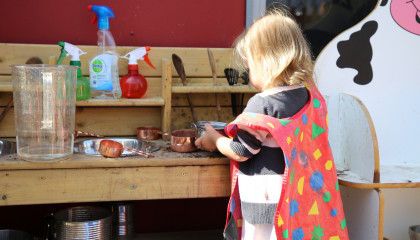You are here: How can we help dads parent from the very beginning?
breadcrumb navigation:
- Home /
- How can we help dads parent from the very beginning?

How can we help dads parent from the very beginning?
Jimmie Franklin
01 September 2017
Debate on paternity leave policy was sparked again following the Equality and Human Rights Commission’s call for better paternity leave to help tackle the gender pay gap, as well as findings from a new study comparing international models of parental leave.
Shared parental leave marked a significant shift for family policy when it was introduced by the coalition government in 2015. It moved forward from the traditional different expectations of mothers and fathers and allowed both parents to share the 52 weeks of maternity leave.
But we still have a way to go in shifting both policy and culture. More action is needed to help new fathers spend time with their children without worrying about the impact on their careers. It is still a mother’s decision whether to transfer her leave to the other parent. When surveyed a year on from the introduction of shared parental leave, over half of mothers said that they did not wish to deduct from their parental leave for the father and 60 per cent of fathers believed that their partner would not want to.
We can look to other countries when considering where next for the UK. In Sweden, both parents are offered up to 480 days of paid, shared parental leave, with 90 being offered exclusively to each parent. For 390 of those days, parents are entitled to nearly 80 per cent of their normal pay and the remaining 90 days are paid at a flat rate. Those who are not in employment are also entitled to paid parental leave. Parental leave can be taken up until a child turns eight.
In Lithuania, new mothers are eligible for 18 weeks leave fully paid, new fathers get four weeks, and together the parents get are offered an additional 156 weeks to share. For the shared portion, the parents can decide whether to have it paid out at 100 per cent for the first 52 of the weeks (until the child is turns one) or 70 per cent for the first 104 weeks, going up until the child is two years old. The remaining leave is offered unpaid.
The Canadian state of Québec offers fathers up to five weeks of paternity without pay from their employers, but instead working parents are eligible for generous benefits during the leave period.
As well as getting the policy right, workplace culture needs to support fathers to balance working and caring responsibilities. My Family Care found that 50 per cent of men strongly agree that taking shared parental leave is perceived negatively at work. In order to promote the positive role of fathers, the Scottish government launched the Year of the Dad in 2016. The campaign was intended to shake myths about the father’s role in family life, and acted as a rallying call for services, employers and dads themselves to appreciate the crucial role a paternal figure can play in their children’s development. By the end of the yearlong scheme, 5,800 individuals and 1,300 organisations had signed up for the campaign.
As part of the fight for gender equality, the role of paternity leave is a crucial one. We can learn from other countries about how we can use parental leave policies to help build a strong economy that helps parents to parent and helps employers to access the talent that parents bring to the workplace.

More from our blog
Welcoming the new NAFIS chairs
Coram Family and Childcare is delighted to announce the appointment of Maryam Makki
Understanding the take-up of early education entitlements
Why do some children miss out on early education, and what can be done to help?
Parent Champions Awards 2024
We were excited to celebrate the valuable contributions of Parent Champions schemes across the...
Sign up to our newsletter
Get the latest news, research and resources from Coram Family and Childcare



